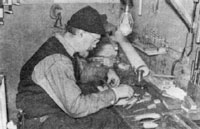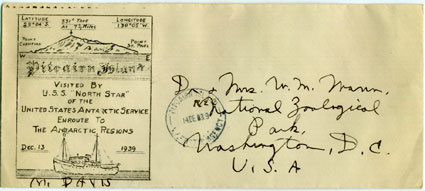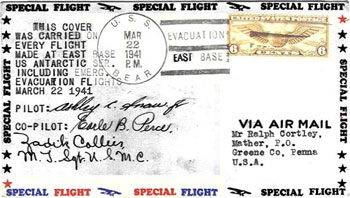|
World War II Was Imminent Another World War was on the horizon as the Third Byrd Expedition sailed. Their work was limited by the threat. Base camps were established at Neny Fiord, (East Base) on Stonington Island in Marguerite Bay, Graham Land . . . |
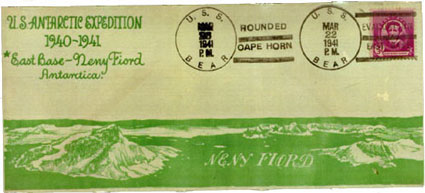 |
 |
. . . and at Little America III in the Bay of Whales on the Ross Ice Shelf (West Base). The expedition, which aimed to start a permanent occupation to "consolidate and extend United States sovereignty over the largest practicable area of the Antarctic continent," was recalled in 1941 when the United States Congress did not provide funds to continue the work. |
|
|
A Zadik Collier Philatelic Masterpiece
Zadik Collier was one of the airplane mechanics and a Technical Sergeant of the US Marine Corps. He came to Antarctica on the U.S.M.S. NORTH STAR.. This cover authenticates both round-trips to the Antarctic ... to deploy the expedition in 1939 and again to evacuate in 1941. (Courtesty of Gary Pierson) |
|
A monster vehicle designed for polar travel was shipped to Antarctica in 1940 for use of the Byrd expedition. It did not function as expected and was abandoned. Collectors mail was recovered and returned to the sales agency. Only the certification on the obverse, as shown below the cover on the right, confirms the authenticity.
|
Philatelically, the most significant port-of-call en route to Antarctica was made by the U.S.M.S. NORTH STAR at Pitcairn Island. The resultant Richard Black originated covers, officially sanctioned by Byrd (who personally approved the commemorative cachet), are among the most prized philatelic items for the U.S.A.S.E. The vessel paid a visit to Pitcairn Island on December 13-14, 1939. The Pitcairn post office was quickly sold out of New Zealand stamps, but through special arrangements, unstamped covers reached their destinations as well as those which were franked. The cachet was designed by Richard Black, leader of East Base, and was applied to mail during the visit. According to news articles of the day, approximately 790 covers were serviced. Two types of mail from this stop exist -- mail left at Pitcairn for a stateside destination and mail canceled at Pitcairn and taken along for the journey south. |
|
This cover was carried on all flights made at East Base, including the emergency evacuation flights of March 22, 1941. Signed by the pilot, co-pilot and none other than Tech. Sgt. Zadik Collier. Although properly air mail franked, surface rate postage would have sufficed since it was not an air mail contract flight. (Courtesy of Herb & Janice Harvis) |
|
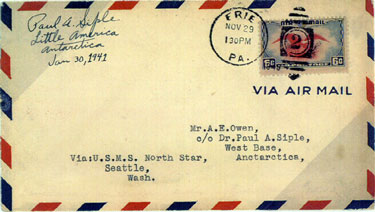 |
Paul Siple was in charge of the main base at Little America during 1940. The base was closed on February 1, 1941. (Courtesy of the George Hall) |
Islas Orcadas del Sud
 |
The
Argentine government maintained the base transferred to them
by the Scottish National
Antarctic Expedition in 1904 with at least seasonal activity.
The site, on Laurie Island, was fully reactivated on February
2, 1942 as a meteorological station. Mail is not known from
1904 to 1942 when the current service began.
|
Operation
Highjump
1946-47
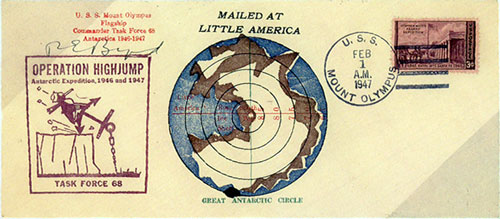 |
Thirteen US Navy ships were committed to Operation Highjump. Only six of them visited Little America while two groups worked in the outer rim as support stations. Ten ships carried their own postal units, but the bulk of the mail was delivered to the United States by the USS PHILIPPINE SEA. |

Telegram drafted
by Admiral Byrd inquiring
about supplies of survival
equipment as well as supplies to make parkas.


